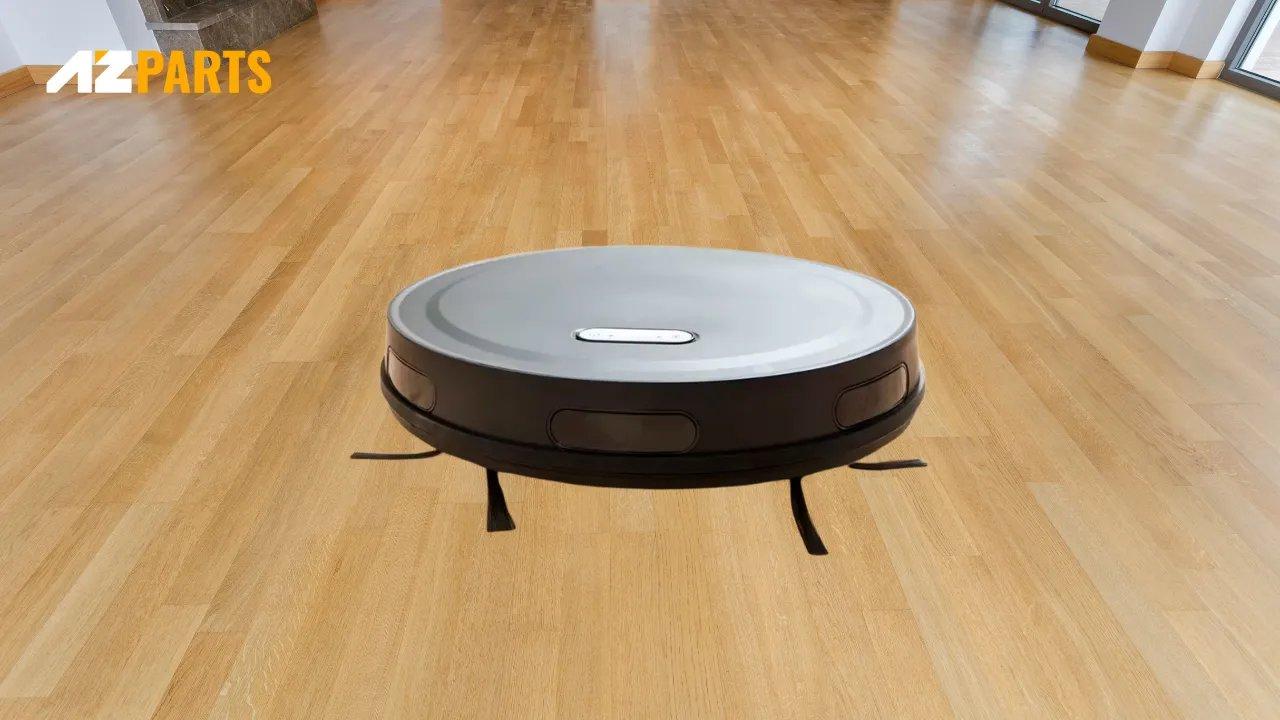Repair help
7 Vacuum Maintenance Tips to Keep It Running Smoothly
AZparts Team
Updated on December 4, 2025
6 min read
Your vacuum cleaner works hard to keep your home clean, but it also needs some care in return. Without regular vacuum maintenance, even the best machines can lose suction, overheat, or break down early. In this article, AZParts will walk you through 7 practical maintenance tips to help your vacuum run smoothly and efficiently for years. Whether you use an upright, canister, or wet & dry model, these tips apply to all.

1. Change the Vacuum Belt Annually
The vacuum belt is an essential component that drives the brush roll inside your vacuum cleaner. This brush roll helps lift dirt, dust, and debris from carpets and floors. When the belt becomes worn out, stretched, or broken, the vacuum cannot clean effectively.
You should inspect the vacuum belt every 6 months to check for signs of damage. If the belt appears cracked, loose, or no longer holds tension, you need to replace it. Experts recommend changing the belt at least once a year to maintain optimal performance.
For a convenient solution, the vacuum kit provides high-quality replacement belts that fit a wide range of vacuum models. A new belt will help your vacuum run smoothly and restore its powerful suction.
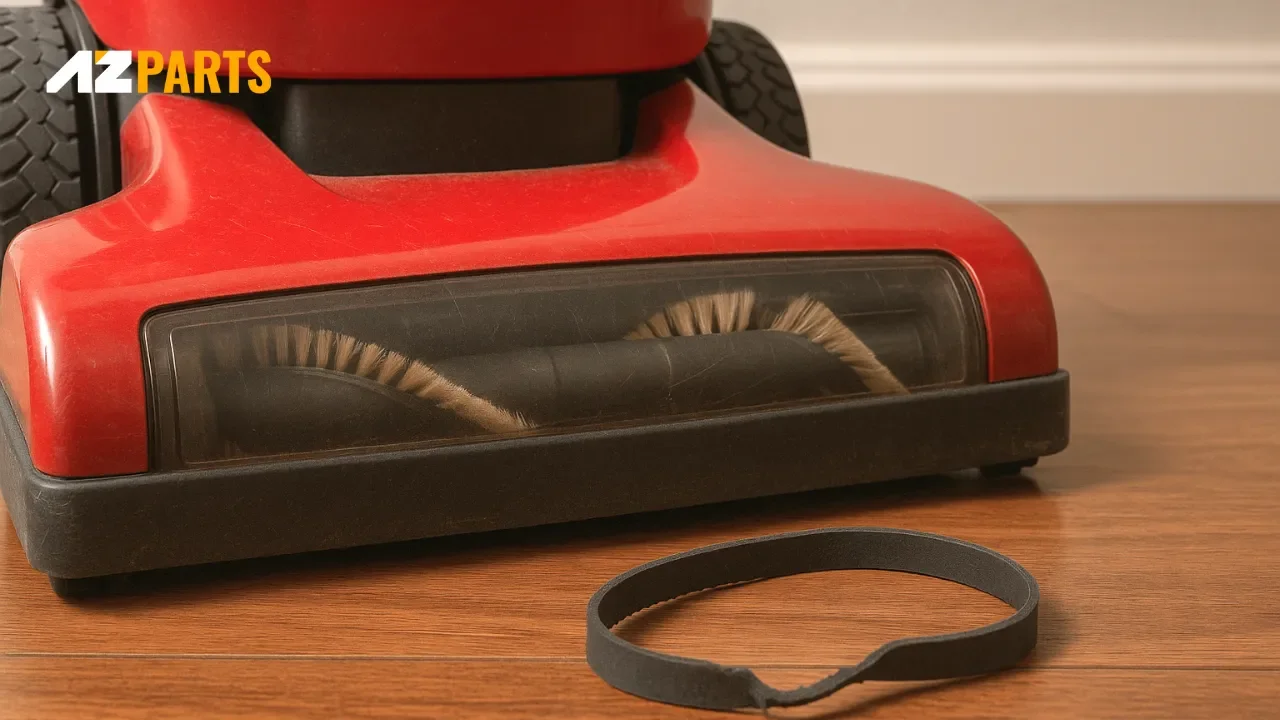
If the belt appears cracked, loose, or no longer holds tension, you need to replace it (Source: AZParts)
2. Clean the Roller Brush Regularly
The roller brush, also known as the beater bar, plays a key role in lifting dirt, dust, and debris from carpets and hard floors. However, over time, hair, threads, and other particles can get tangled around the brush. This buildup can reduce your vacuum’s cleaning power and even damage your floors.
You should remove the roller brush at least once a month to inspect and clean it thoroughly. Use a pair of scissors to carefully cut away any hair or string that has wrapped around the brush. Make sure to check the bristles for signs of wear or damage. If the brush roll feels stuck or makes unusual noises, you should clean the bearings as well.
A clean roller brush ensures better dirt pickup and protects your flooring from scratches. If your current brush is worn out or no longer spins properly, the AZParts vacuum roller brush is a reliable replacement option that helps restore your vacuum’s performance.
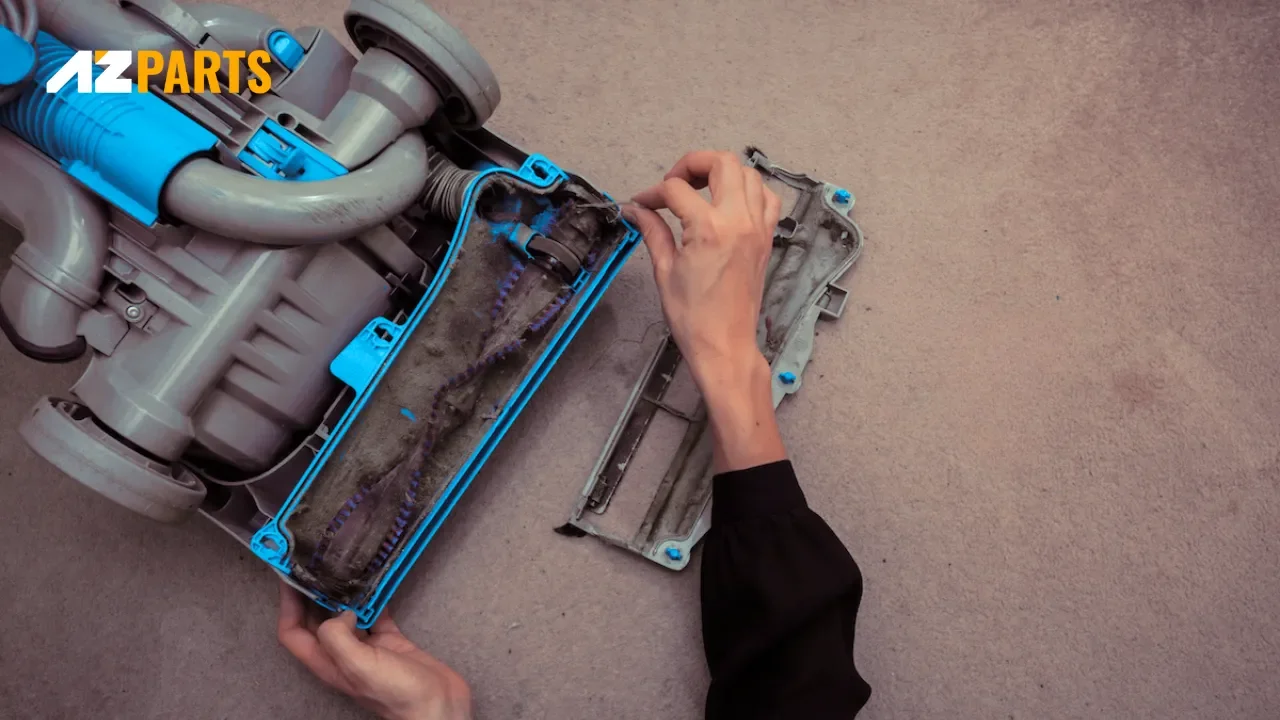
You should remove the roller brush at least once a month to inspect and clean it thoroughly (Source: AZParts)
3. Replace the Vacuum Bag When 70–80% Full
Many people wait until the bag is completely full before replacing it, but this habit can reduce suction power and put unnecessary strain on the motor. You should replace the vacuum bag when it is about 70 to 80% full. A bag that is too full forces the vacuum to work harder, which can overheat the motor and shorten the machine’s lifespan. It also makes it more difficult to remove the dust and debris, as everything becomes tightly packed and may escape during emptying.
In addition, you should check the bag compartment regularly to ensure there is no debris trapped inside. A clean dust compartment helps the vacuum maintain strong suction and improves overall performance.
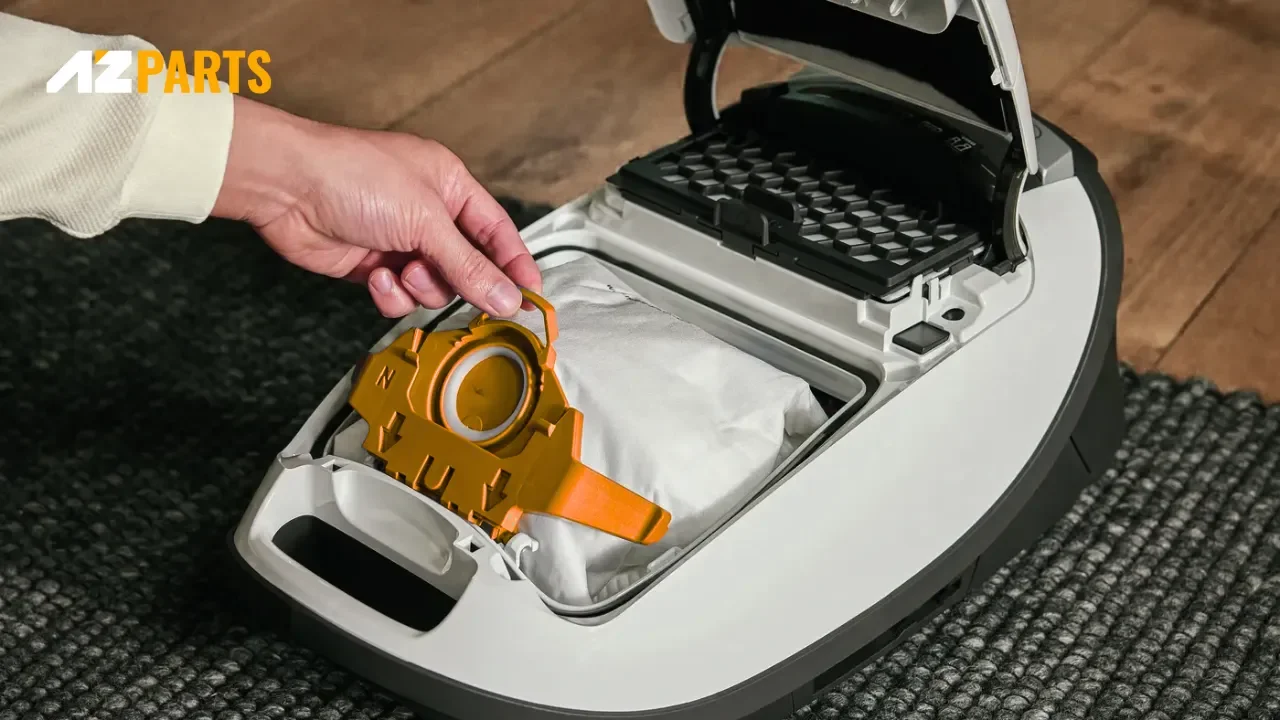
You should check the bag compartment regularly to ensure there is no debris trapped inside (Source: AZParts)
4. Keep Your Filters Clean
The filter plays a vital role in the vacuuming process because it helps trap fine dust, allergens, and other micro-particles that pass through the vacuum. Most vacuum filters are washable and should be cleaned regularly to avoid clogging. A dirty filter can reduce suction power and allow dust to be released back into the air.
If your vacuum uses a replaceable filter instead of a washable one, you should install a new vacuum filter according to the manufacturer’s recommendations. Regularly checking and cleaning the filter not only improves vacuum efficiency but also helps maintain cleaner indoor air quality.

If your vacuum uses a replaceable filter, you should install a new vacuum filter according to the manufacturer’s recommendations (Source: AZParts)
5. Monitor Performance (And Act Early!)
If you notice a sudden drop in suction or if the vacuum starts overheating, this may indicate a blockage or internal issue. Clogs can develop in various parts of the vacuum cleaner. The most common places where clogs appear include the roller brushes, the beater bar, the hose, and the entrance to the dust bag or canister. You should carefully inspect these areas and remove any visible debris.
You also need to clean and maintain all vacuum attachments. First, disconnect the hoses and check for any obstructions. Then, use a flexible cleaning brush to clear out any debris inside the hose. Next, inspect all extension wands and other attachments. If you find any blockages, you must remove them.
Regular cleaning of the attachments is essential. You should clean them immediately after each use using warm water and mild soap. This habit will help prevent dirt buildup and maintain optimal performance.
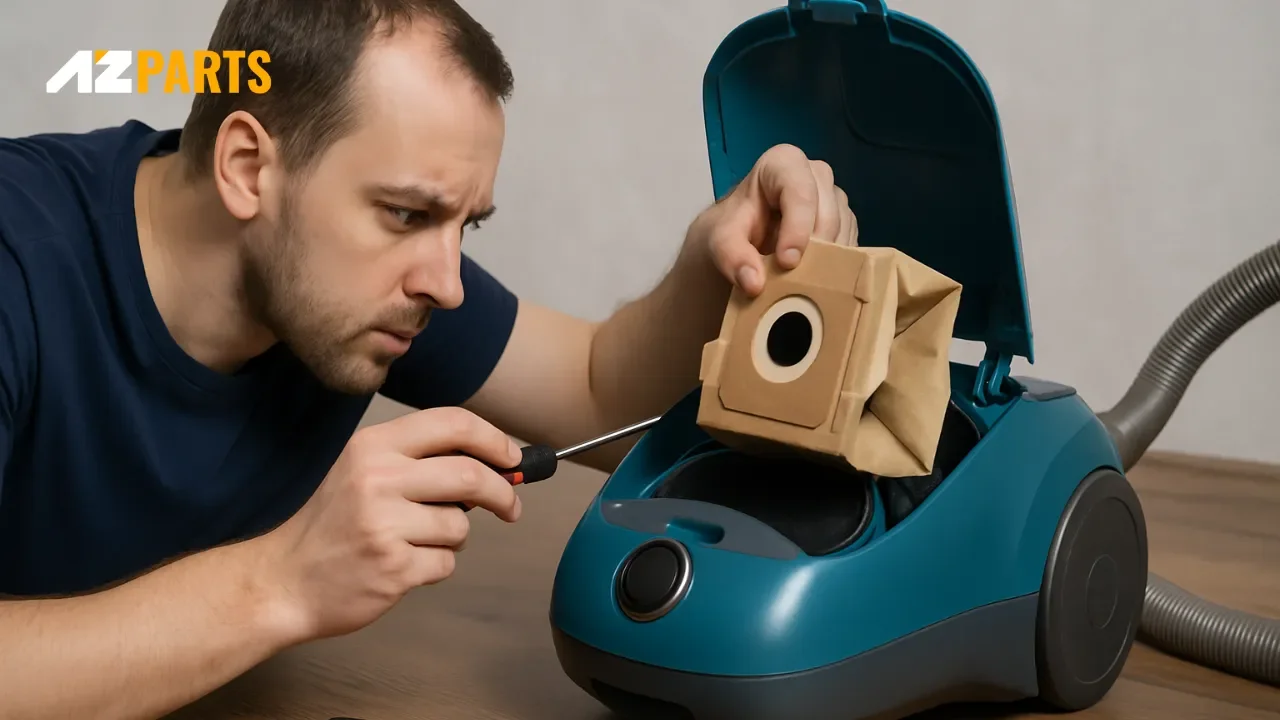
Regular cleaning of the attachments is essential (Source: AZParts)
6. Adjust Nozzle Height Properly
You should always adjust the nozzle height to match the type of floor you are cleaning. Setting the nozzle too low can make the vacuum difficult to push and may damage the carpet or floor surface. On the other hand, setting it too high can reduce suction and cleaning efficiency.
- For carpeted floors, you need to lower the nozzle enough to create a good seal without restricting movement.
- For hard floors such as wood or tile, you should raise the nozzle slightly to prevent the vacuum from scattering debris.
Many modern vacuum cleaners come with adjustable height settings. You should take time to learn how to use these controls correctly. If your vacuum has manual settings, test a small area first and adjust as needed for smooth movement and strong suction.
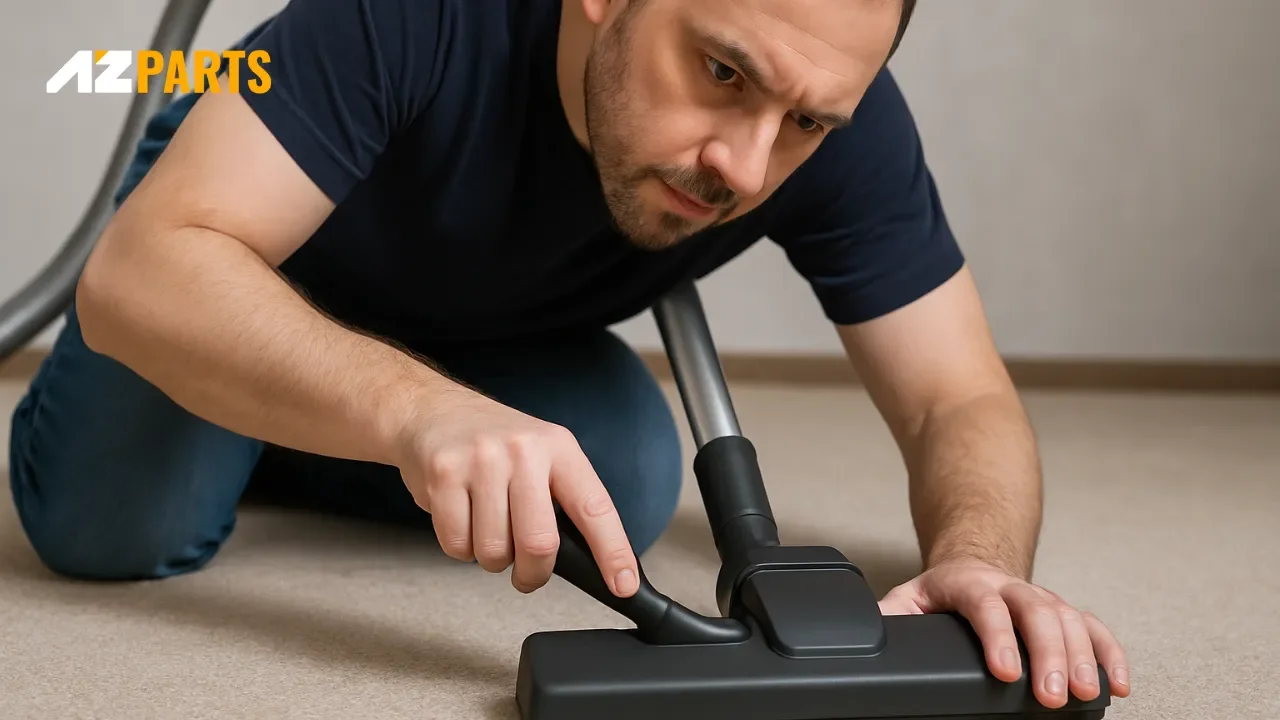
You need to lower the nozzle enough to create a good seal without restricting movement for carpeted floors (Source: AZParts)
7. Schedule Seasonal Vacuum Servicing
Even if you maintain your vacuum cleaner regularly at home, certain internal components still require professional care. You should schedule a full service check every 12 to 18 months to keep your machine running smoothly.
During servicing, a technician will inspect the motor, bearings, and electrical parts for any signs of wear or damage. If needed, they will replace worn-out components to prevent future breakdowns. Regular professional servicing helps extend the life of your vacuum and ensures it continues to operate at peak performance.
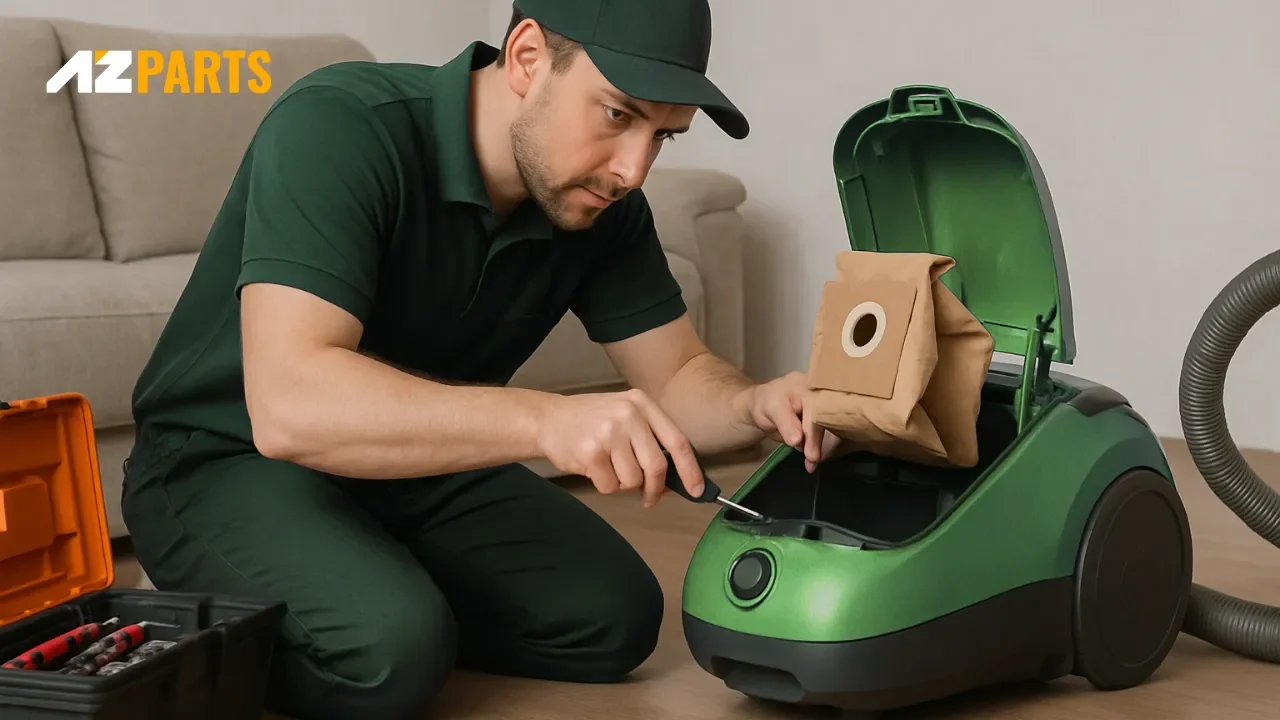
Regular professional servicing helps extend the life of your vacuum and ensures it continues to operate at peak performance (Source: AZParts)
Staying on top of your vacuum maintenance doesn’t have to be complicated, but it does make a big difference. A few simple checks and cleanings can prevent major problems and extend the life of your machine. And when it’s time to replace filters, hoses, or other components, trust AZParts to provide high quality, compatible replacement vacuum parts you can rely on. Keep your vacuum in top shape, shop with AZParts today!
Contact Info
Address: 8 The Green, Ste A, Dover, Delaware 19901-3618, United States
Email: support@azparts.com
Check out more:
2. How Do Robot Vacuums Work? Core Components Explained
Vacuum
Further Reading
Further Reading




